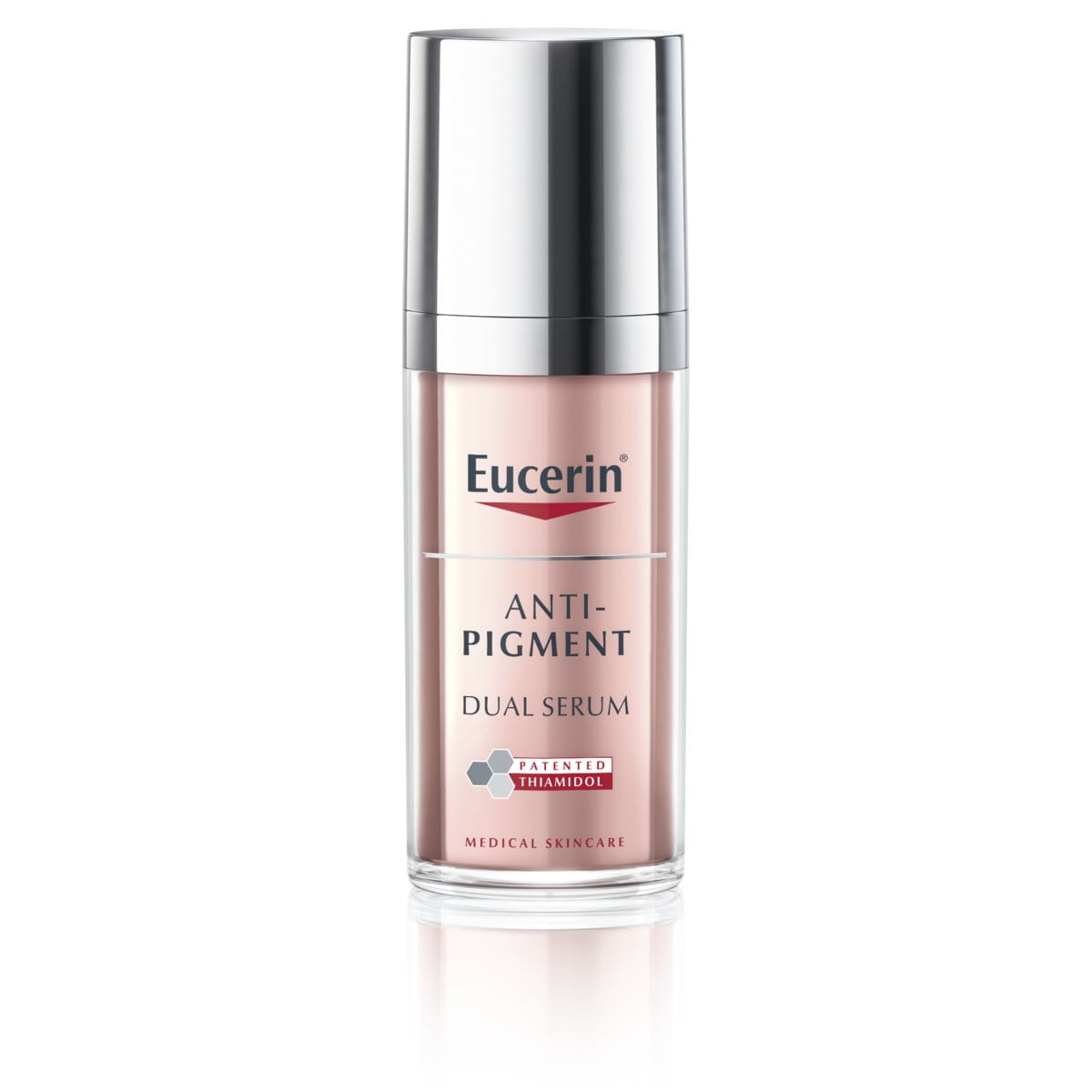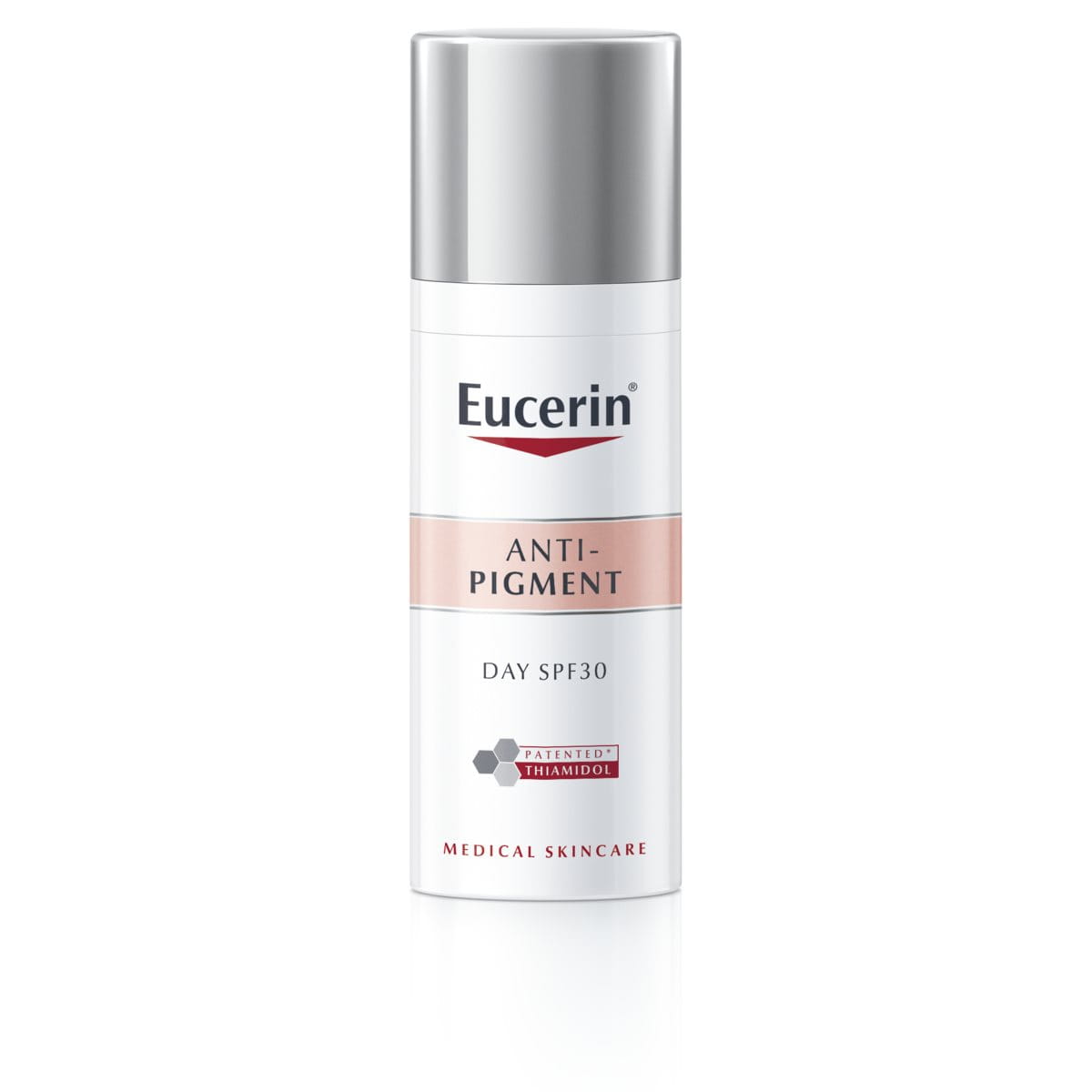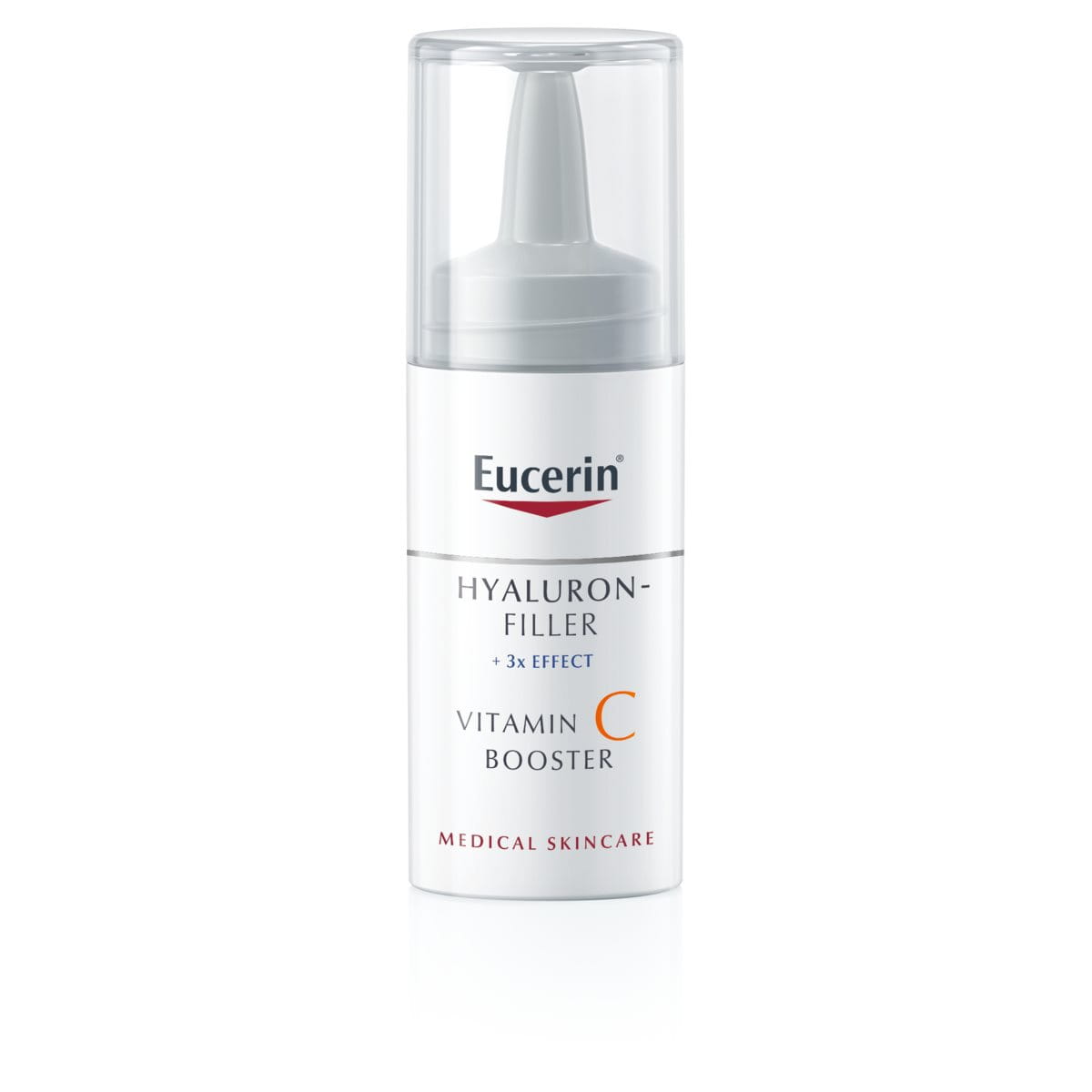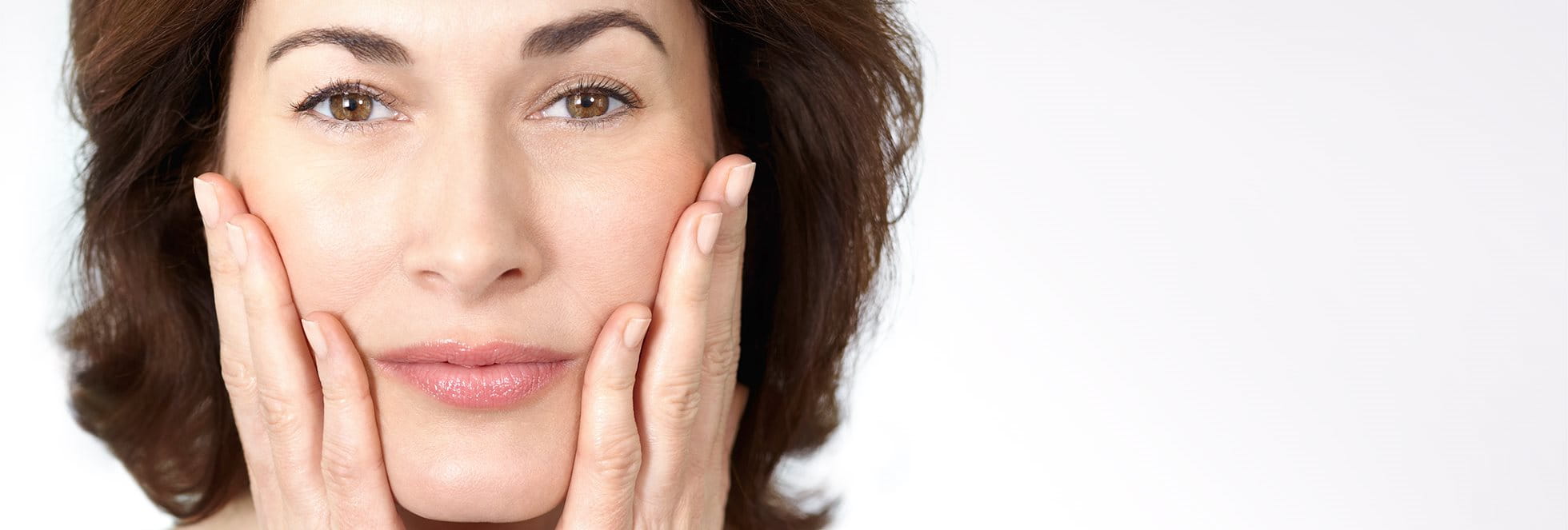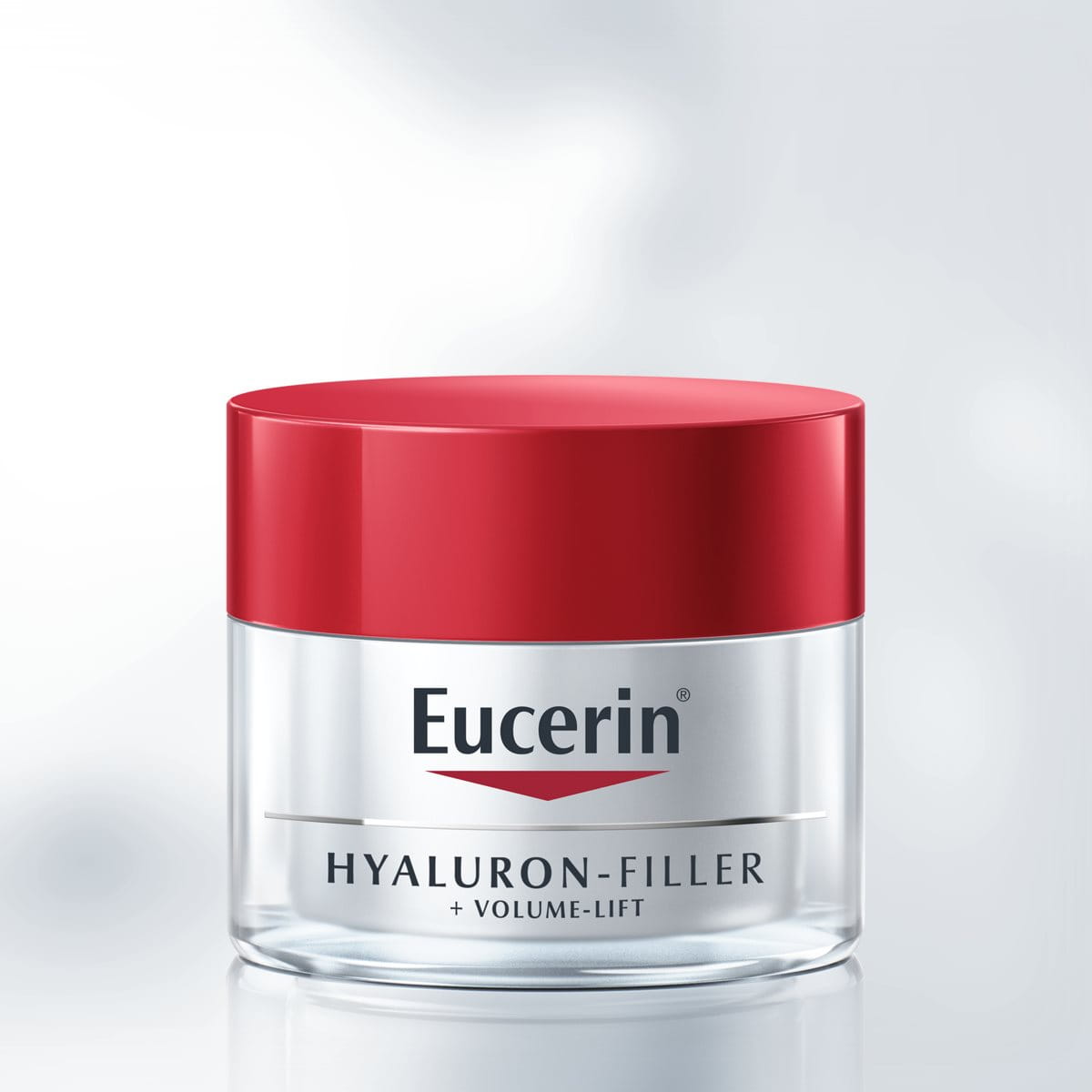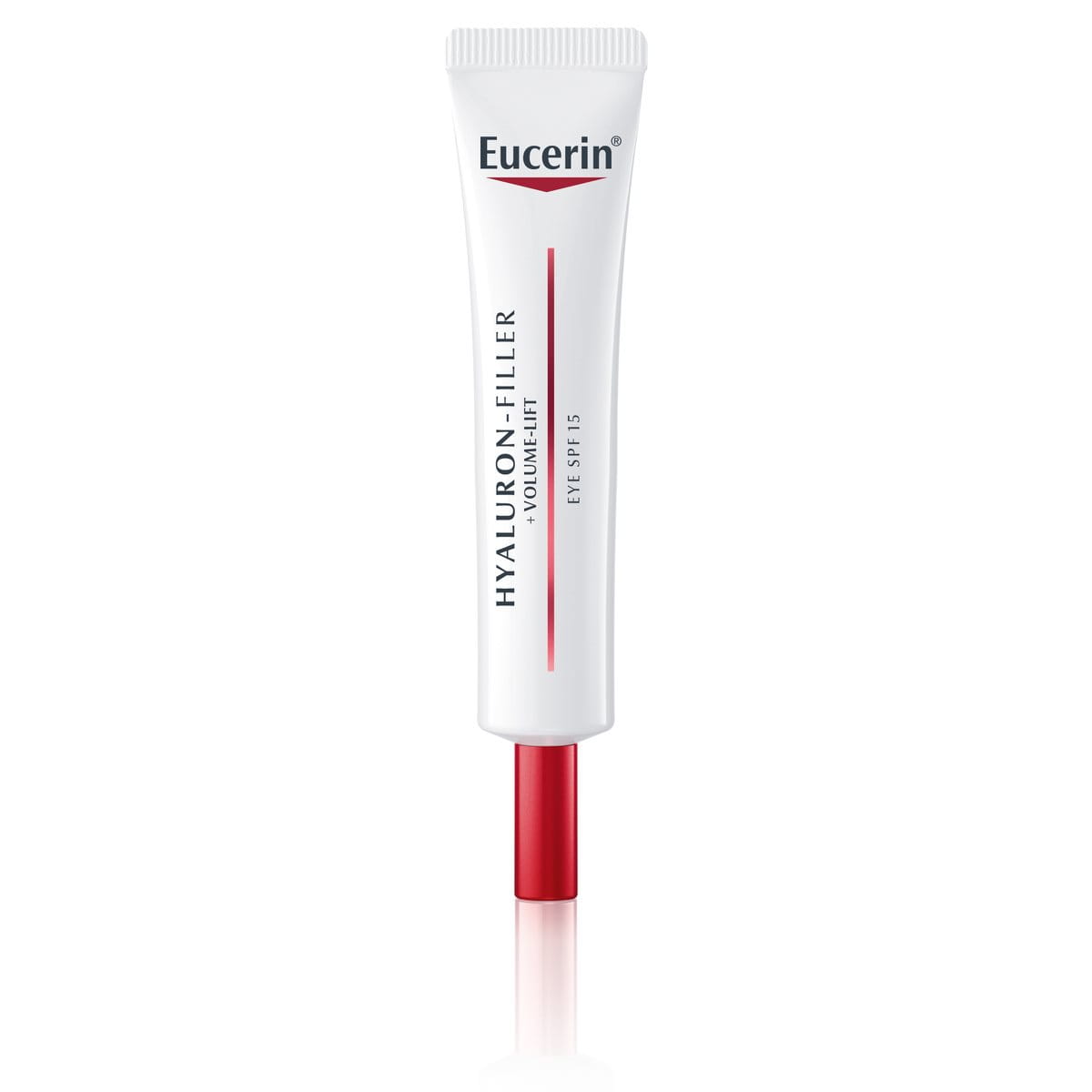As our skin ages, its structure changes. By our 40s, most of us are experiencing a loss of volume, sagging contours and deepening wrinkles. This is due to a combination of internal processes and external factors.
Sagging skin and the skin aging process
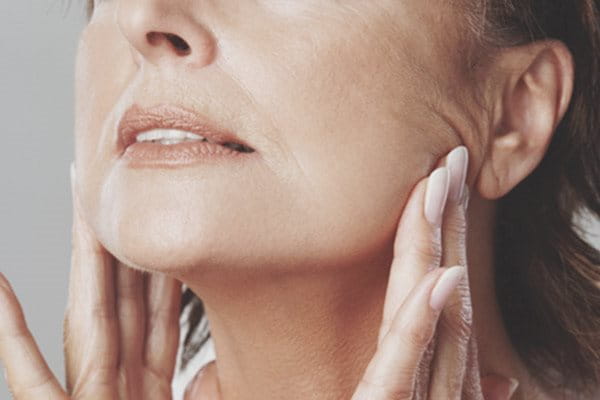
The way we age is partly due to our genetics. This intrinsic aging combines with environmental and lifestyle factors to trigger the slowing down of key processes and functions in the skin. It is this slowing down which causes the most visible signs of aging: fine lines and wrinkles, sagging skin and a loss of volume and facial contours, a loss of elasticity and a loss of radiance.
Sagging skin is caused by a decrease in volume-giving cells.
This loss of volume, together with wrinkles, a loss of radiance and a loss of elasticity, causes facial skin to start looking older. It can be difficult to identify a loss of volume and facial contours. The first signs of a loss of volume in the lips tends to be when lipstick starts to bleed. A loss of facial volume tends to result in sagging skin, a flattening of the cheeks and the appearance of a “turkey neck”. It changes the overall appearance of the face which can look negative, sad or tired. The fold that develops between the nose and the mouth, known as the nasolabial fold, is also linked to sagging skin and a loss of volume.
Signs & Symptoms
How do I recognize sagging skin and a loss of volume?
The triangle of beauty
A visual reference such as ‘the triangle of beauty’ clearly shows how a loss of volume changes the shape and structure of the face in several subtle but transformative ways.
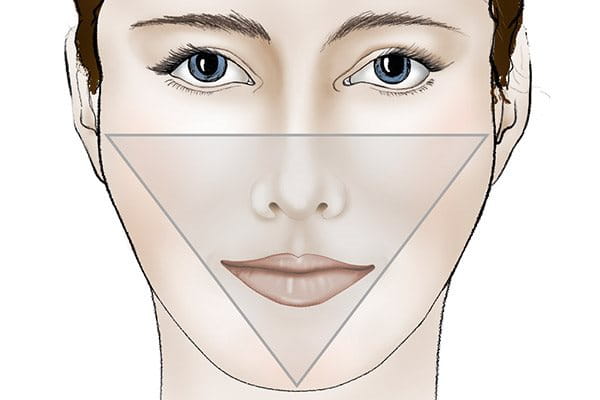
The even distribution of volume in our facial skin when we are young helps it to look attractive. The main features of a younger looking face can be clearly seen as part of the ‘triangle of beauty’. These include:
- High cheekbones
- Full jowls
- Smooth skin
- A lean, well-defined jaw line
These features combine to create a face shape and structure that is wider at the top, tapering down to the narrowest point at the chin. The overall look is relaxed and positive.
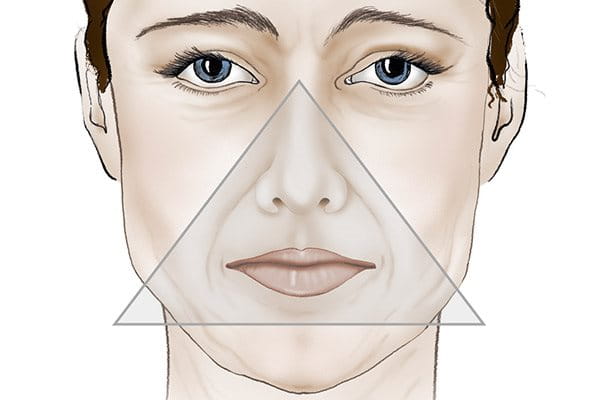
As we age, the signs of a loss of volume mean the triangle is inverted. This is due to the following changes:
- A wider, slacker jaw line
- Sagging skin resulting in less defined facial contours
- Flatter cheeks
- Wrinkles on the forehead and brows
- The corners of the mouth point downwards
- Hollowness of under eye area and temples
It’s the combination of these factors that equates to an aged appearance. As is seen here, the triangle is now turned upside down with the wider area towards the bottom of the face. As volume diminishes and skin sags the perception of the face is altered. The person can look sad or stressed and this can lead to incorrect judgements on their mood or outlook.
Contributing Factors
What processes take place within skin as it loses volume?
A gradual drop in the ‘filler’ substances that keep skin looking firm and feeling smooth lead to a loss of volume, less defined contours and sagging skin in the different layers of skin:
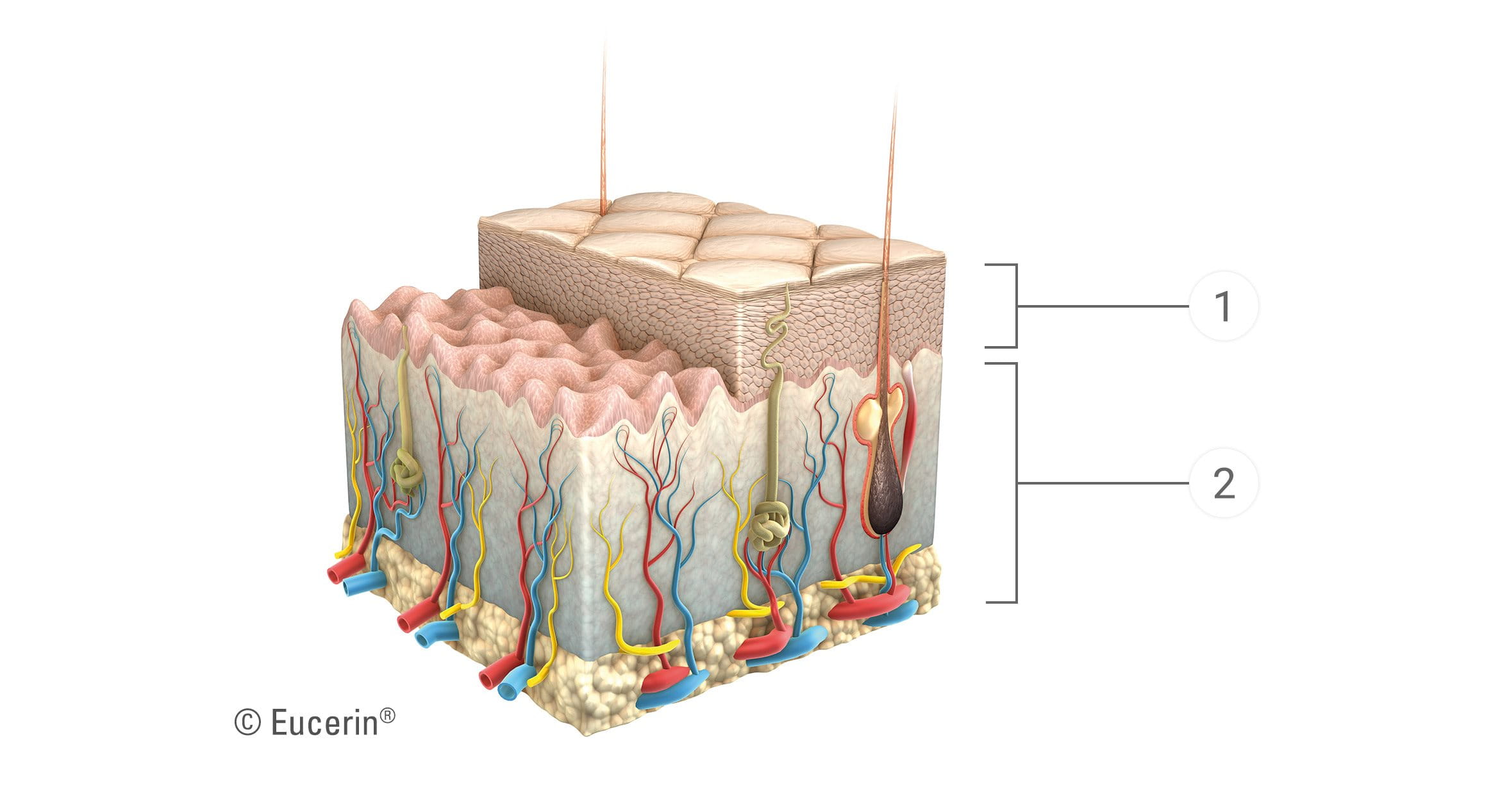
The epidermis. As we age, the outermost layers of skin produce less hyaluronic acid and fewer lipids. Skin is less able to bind in moisture, becomes drier and, as a result, fine lines and wrinkles appear. Skin starts to sag, appears thinner and its texture may be dry and rough.
The deeper layers of the skin. A 1% annual loss of collagen worsens the thinning effect together with a declining level of functional elastin. As elastin is partly responsible for the skin’s elasticity and strength, a decrease in these two substances together results in a sagging, less elastic skin. The volume-giving cells that keep skin `filled out’ reduce in size and number, leading to a shrinking of these layers. The result is a more drawn and sunken look to the skin, with flattening of the cheeks.
Over time, the blood flow delivering nutrients slows, resulting in dullness and a tendency towards dehydration and slower healing. Skin undergoes a further loss of elasticity and deep wrinkles start to form.
What factors cause sagging skin and a loss of volume?
It’s not just our genetics that determine how we age. There are a range of other internal and external factors that lead to a loss of volume in skin:
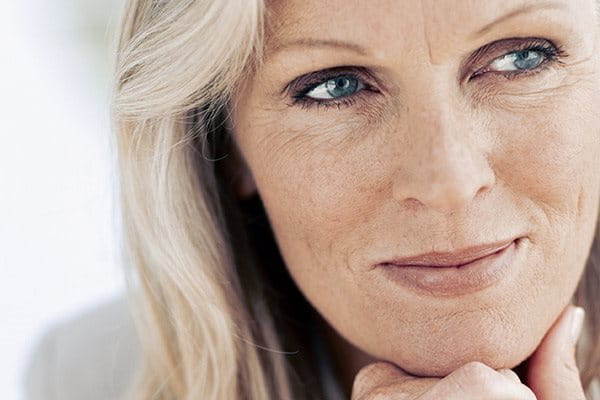

Hormonal changes
In puberty, estrogen levels are high. Skin is smooth and elastic and the skin contours are defined. As we age, hormone levels decline and volume-giving cells decrease in both size and number leading to a loss in volume and less defined facial contours.
Lifestyle
As part of general skin aging a loss of volume is also caused by the same external lifestyle factors that also contribute to wrinkles and a loss of elasticity and radiance. These include:
- Sun: Spending too long in the sun can damage collagen, compromise skin structure and cause photoaging (premature skin aging caused by the sun)
- Smoking: Nicotine and other chemicals in cigarettes further degrade skin collagen
These lifestyle factors combine to cause oxidative stress. This occurs when molecules known as ‘free radicals’ are formed internally and attack cellular structures including those that help the skin look smooth and firm. Once the structure is weakened, and collagen and functional elastin decline, skin aging is accelerated. The visible signs including fine lines and wrinkles, a loss of volume, a loss of elasticity and less radiance appear on skin’s surface.
Solutions
How can I address sagging skin and a loss of volume?
Although a loss of volume is a complex concern and is in many ways inevitable, the visible effects can be treated in a variety of ways.
Volume-giving skincare solutions
A daily skincare routine, using products specially formulated to treat a loss of volume, will give sagging skin the care it needs and can have a lifting effect. The following active ingredients (listed alphabetically) are used in anti-aging formulas to address the causes of skin sagging, loss of volume and poorly defined facial contours.
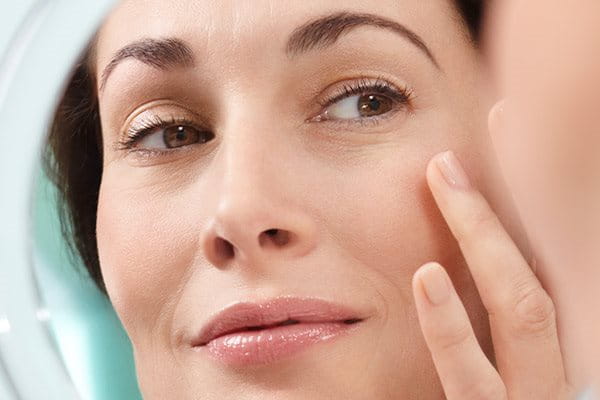
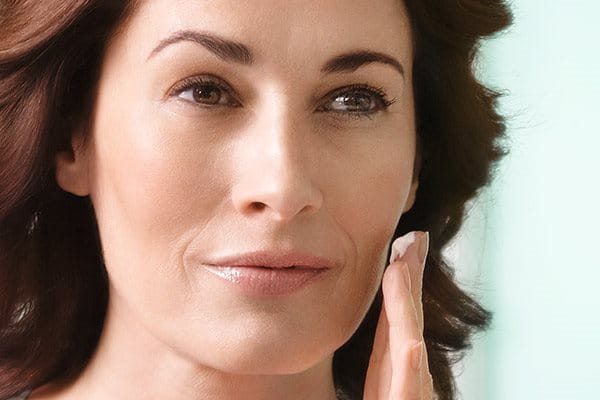
Hyaluronic Acid is formed by skin cells and is part of the connective tissue of the skin. One of its key functions is to retain moisture, and it has the ability to bind in between 1,000 and 10,000 times its own weight in water (i.e. one gram binds between one and ten liters). As we age, the skin’s natural ability to produce Hyaluronic Acid decreases and wrinkles start to form and deepen. The Hyaluronic Acid in the Eucerin Hyaluron-Filler + Volume-Lift formula intensively moisturizes skin and plumps up deep wrinkles.
Dermatological treatments
If you remain concerned about a loss of volume in your skin your dermatologist may recommend one of the following treatments:
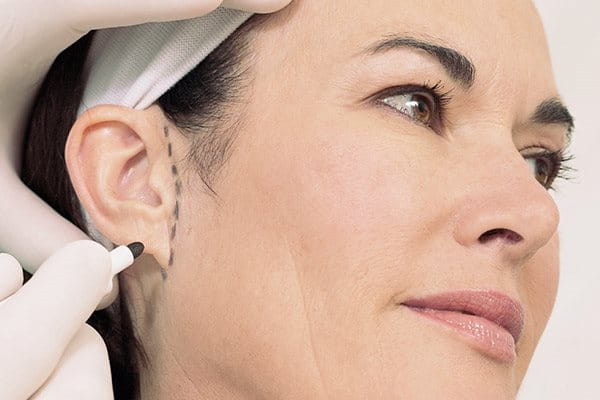
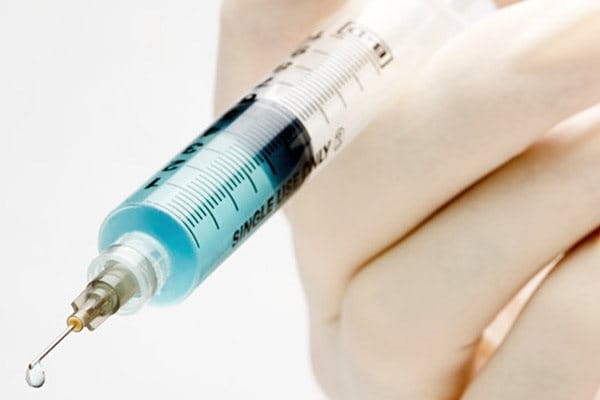
Non-invasive treatments:
- Thermowaves
Radio frequency technology is used to heat the deep collagen layers of the skin. This heat promotes the production of new collagen and tones existing collagen. The aim is to restore poorly defined facial contours.
- Ultrawaves
This treatment uses ultrasound to lift, tone and tighten sagging skin.
Mildly invasive treatments:
- Fillers
Injectables are used to temporarily replace volume and give instant, short-term results. Usually used on the cheeks, temples and lips or under the eyes. Injectable Hyaluronic Acid can also help with wrinkles.
Invasive treatments:
- Fat transfer
This method involves surgically removing fat from one area of the body and transplanting it to another. It is most commonly used to replace volume in the cheeks and results are long-lasting. Swelling is not unusual and the treatment usually requires a period of downtime.
Our brand values

We deliver a holistic dermo-cosmetic approach to protect your skin, keep it healthy and radiant.

We work together with leading dermatologist and pharmacist partners around the world to create innovative and effective skincare products they can trust and recommend.

For over 100 years, we have dedicated ourselves to researching and innovating in the field of skin science. We believe in creating active ingredients and soothing formulas with high tolerability that work to help you live your life better each day.
